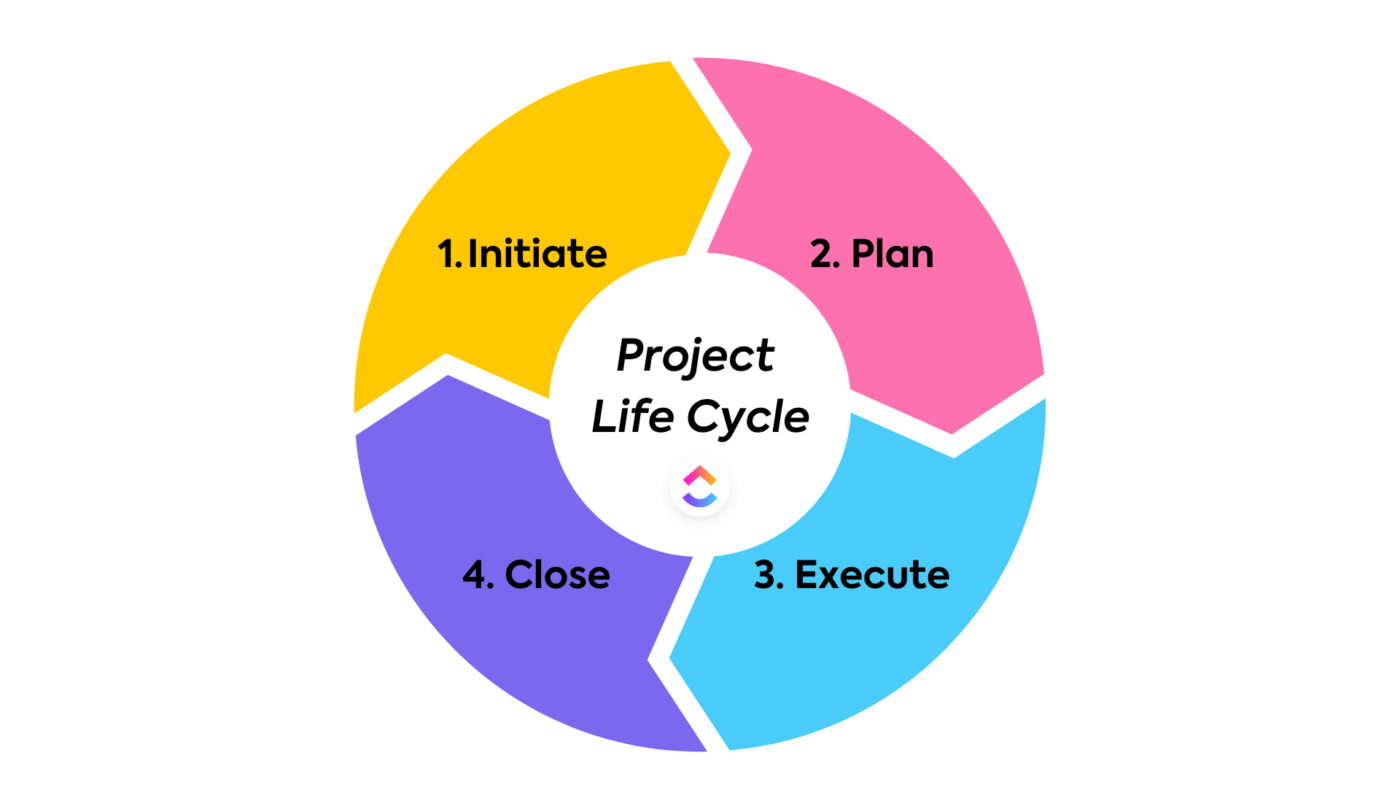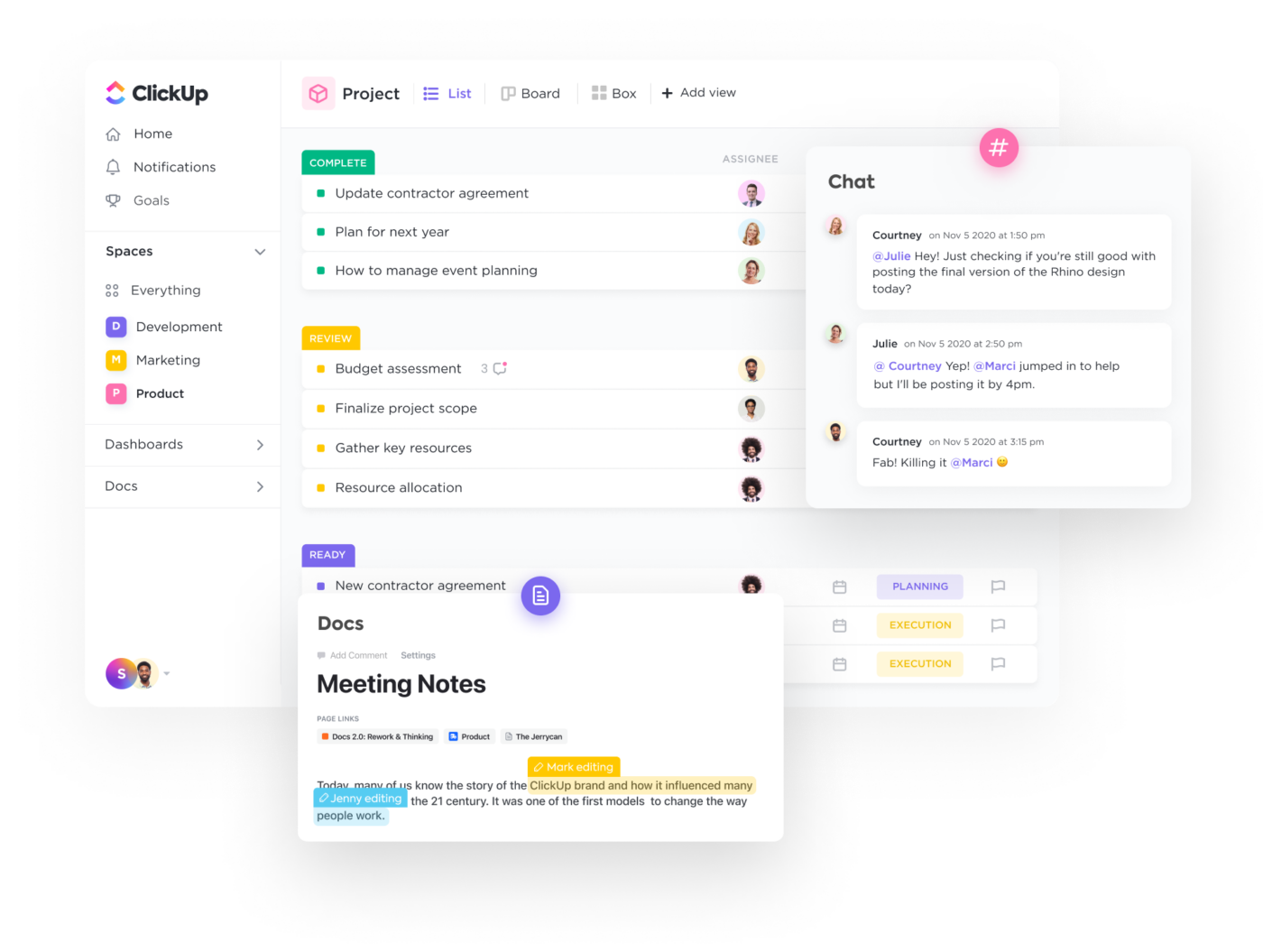

Whether it’s a home or a business project, simple or complex by nature, the secret sauce to delivering successful projects is starting strong with the right strategy and execution plan.
You can do this (and do it well) with a go-getter mindset, proper project management approaches, and the right tools.
In this article, you’ll learn about the building blocks of project management, including the key success factors and phases, as well as how project management tools can keep them together. Then we’ll show you how it all works in practice with five real project management examples! 👌
This Article Contains:Summarize this article with AI ClickUp Brain not only saves you precious time by instantly summarizing articles, it also leverages AI to connect your tasks, docs, people, and more, streamlining your workflow like never before. Summarize article
Summarize this article for me pleaseManaging projects from start to finish can come with long and complex processes. So, to help make everyone’s job easier, the concept of the project life cycle was introduced.

The project life cycle, or project management process, consists of four phases: initiating, planning, executing, and closing. It’s a structured path your projects go through to help move them from conception to completion and ensure project objectives are delivered in each phase. Let’s take a look at what the project manager is responsible for in each phase:
Get everyone onboard. The project manager defines the organization, client, or customer’s goal, identifies key stakeholders, the project team, and the scope of work of the project, and determines measurable objectives for the team.
Strategically prepare and map out the project. The project manager is responsible for creating a detailed project plan and outlining the project schedule that includes the major project milestones and describes what tasks or deliverables make up each milestone. This is important because the project plan provides a strategy and project checklist to help properly manage resources, budget, and timeline along the project life cycle.
It’s go time. In this phase, the project manager’s main job is to oversee the team’s efforts and ensure everyone understands what’s expected of them, what tasks need to be done, and how and when to complete those tasks to ensure everything is done within the project schedule.
Time to wrap up the project. The project manager must identify that their team has completed all of the requested outcomes, then present the final product to the stakeholders to sign off and officially close the project.
Summarize this article with AI ClickUp Brain not only saves you precious time by instantly summarizing articles, it also leverages AI to connect your tasks, docs, people, and more, streamlining your workflow like never before. Summarize article
Summarize this article for me pleaseCritical factors for successful project management can vary from one project to another, but here are a few factors that should remain constant no matter the type of project or what industry you’re in: ✅ Set SMART goals ✅ Understand the project scope and prevent scope creep ✅ Identify project risks and create a risk management plan ✅ Clearly defined roles and responsibilities ✅ Effective team communication ✅ Maintain a high level of project visibility
With so many factors that can impact project success, using project management software can help to keep everyone and everything on track and ahead of curveballs. A good project management app can take so much of the burden of managing projects off your shoulders by providing teams with the tools they need to get a high-level overview of their work, streamline business processes, create efficient workflows, communicate more effectively, and make collaboration seamless and more enjoyable. ClickUp, for one, helps project managers and teams plan, manage, track projects, and collaborate with each other—all in one place. Its fully customizable platform gives teams the flexibility and the advanced tools they need to create the most efficient workflow that best suits their project needs and preferences. And because the platform is fully customizable, teams in ClickUp are fully equipped to handle any type of project and support any type of project management methodology, including the most common approaches such as Waterfall, Agile (Scrum and Kanban), Lean, Six Sigma, and more.

Now, let’s take a look at a few real-life project management examples and learn how other industry experts have successfully delivered projects using the right methodology and tools!
Summarize this article with AI ClickUp Brain not only saves you precious time by instantly summarizing articles, it also leverages AI to connect your tasks, docs, people, and more, streamlining your workflow like never before. Summarize article